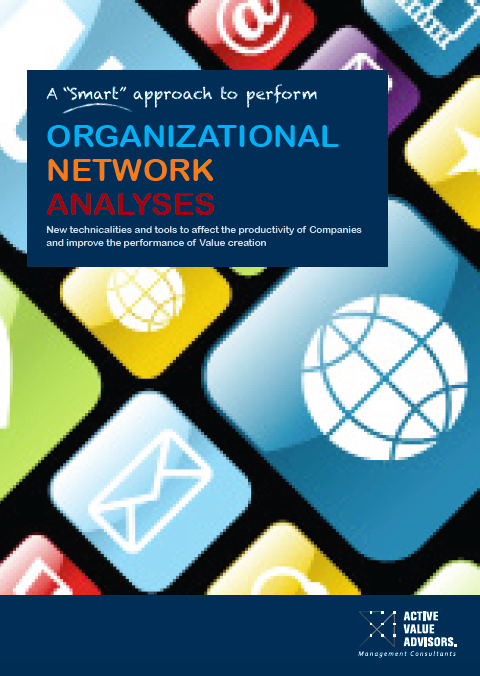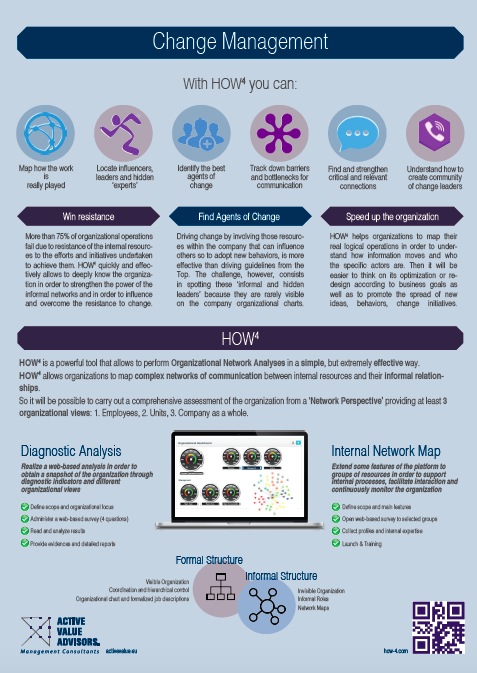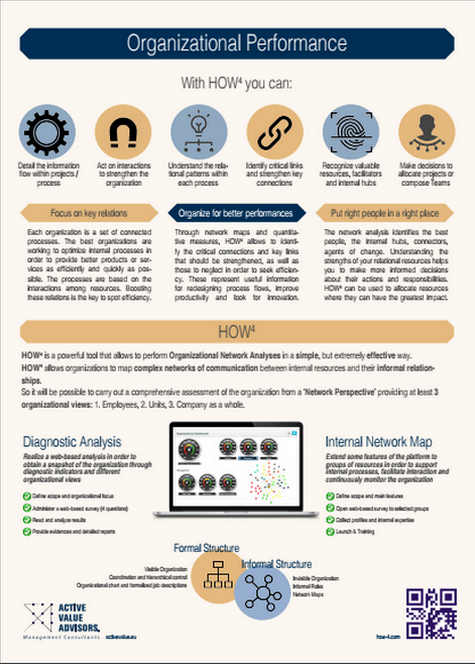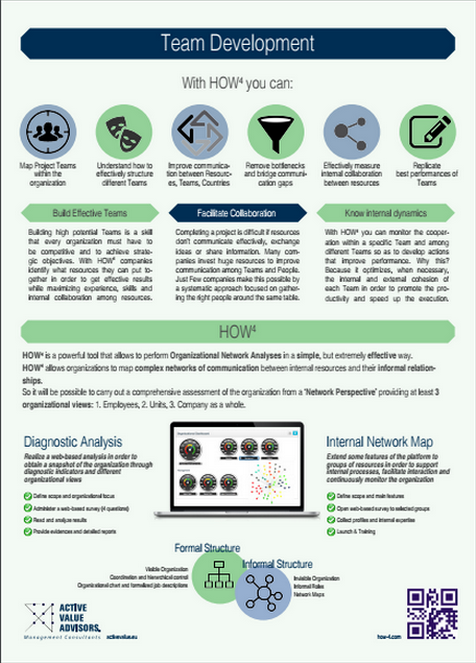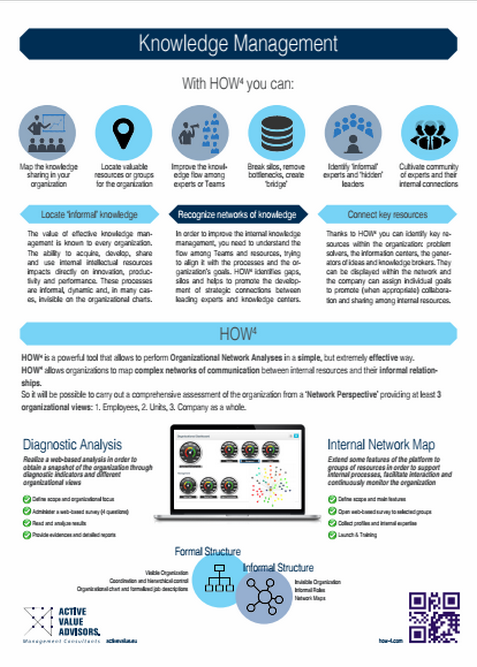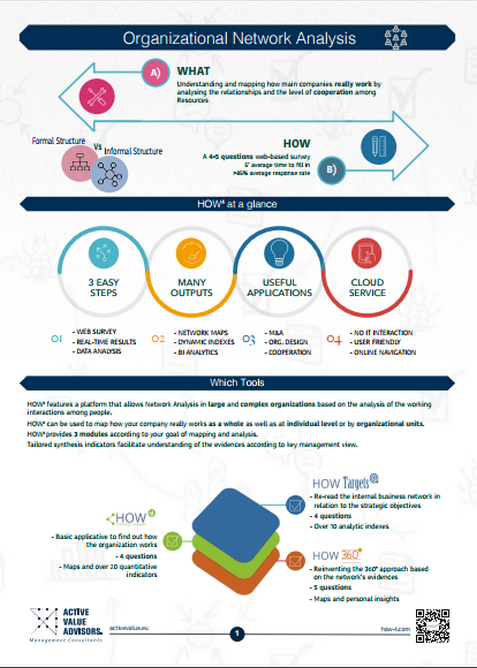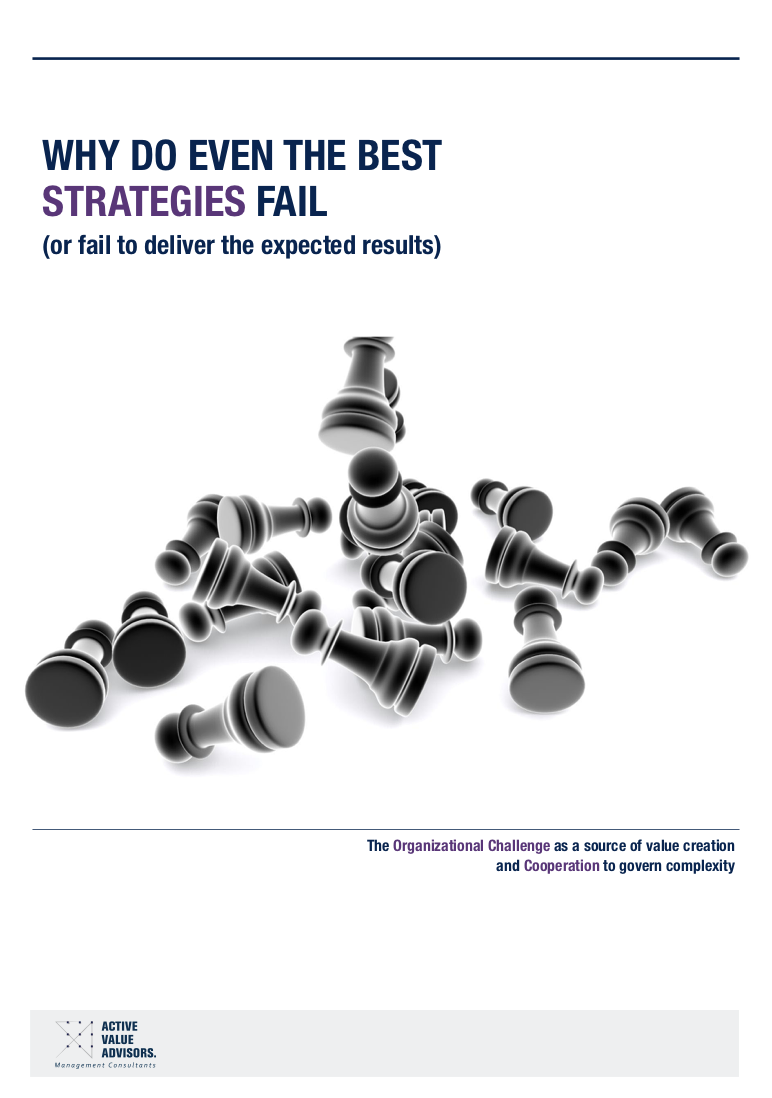HOW CAN ONA FOSTER DIVERSITY?
The persistence of Unconscious Biases among employees can prevent people from working together effectively, damaging the development of inclusive relationships that foster creativity and innovation.
D&I metrics have so far proved to be ineffective in measuring how inclusive an organization really is, focusing mainly on gender figures and minorities representation.
Organizational Network Analysis can track the number, strength and heterogeneity of interactions between employees, with the aim of highlighting collaborative patterns and possible obstacles to career progression.
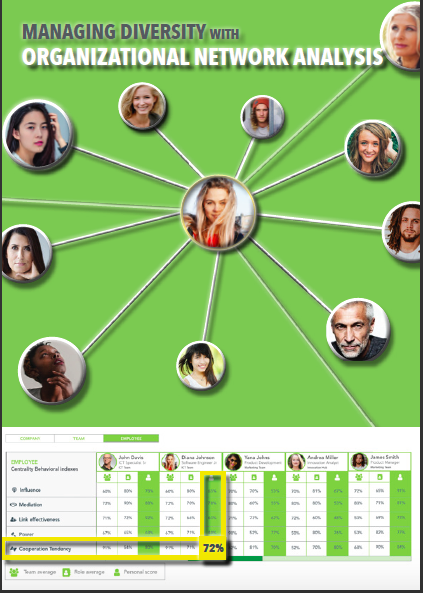
MANAGERIAL FRAMEWORK
The proliferation of heavy organizational structures undermines business efficiency and the company’s result orientation.
Promoting cooperation among People/Teams paths the way to innovation, productivity and organization agility.
The tool and methodology to face this challenge is the Organizational Network Analysis (ONA): the starting point for understanding how to make strategies effective.
FOUNDATIONS OF NETWORK THEORY
ORGANIZATIONAL DENSITY
- It is a good proxy of the speed at which information circulates within the organization. It can be computed as the sum of existing links within a group or subgroup / maximum number of possible links).
THE CONCEPT OF BETWEENESS
- It is a complex calculation that helps investigating the level of centrality.
- It measures how much an Employee/Team is in the middle of the workflow and connects different actors in the organization that would otherwise be disconnected.
THE CONCEPT OF CLOSENESS
- Analyzes the length of the shortest path between the actor examined and all other nodes in the organization’s network
- The more central the node is, the closer it is to all the others
- If this index is = 1, it means that the node has direct connections with all the others (one-to-one)
THE ROLE OF MUTUAL LINKS
- Mutual links are relationships that have been reported by a person and confirmed by co-workers.
- A high percentage of confirmed links means that the relationships between colleagues are clear and that efficiency is high.
Not sure which module suits your organization?
Do not hesitate to contact us to receive more info!

